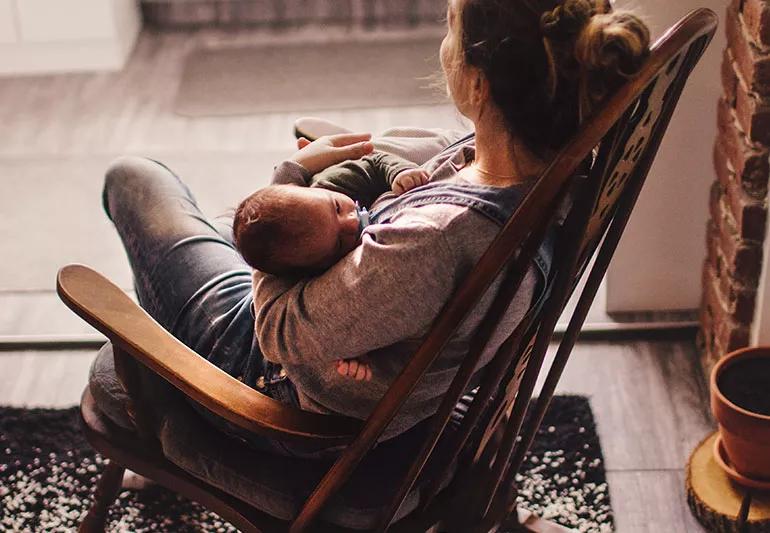Pediatrician-approved sleep tips

Parents wait all day for that blissful break from diapers, dishes and other demands. Sometimes baby’s bedtime can’t come soon enough.
Advertisement
Cleveland Clinic is a non-profit academic medical center. Advertising on our site helps support our mission. We do not endorse non-Cleveland Clinic products or services. Policy
The last thing you want is a child who’s not ready to unwind when you are.
While you can’t force a child to fall asleep at your command, there are things that soften the bed, so to speak.
“Making children feel sleepy requires decreasing their level of cortisol, the hormone that keeps them revved up and ready to go,” says pediatrician Maureen Ahmann, DO. “To decrease cortisol, calm their senses.”
Rocking your baby and singing a lullaby may be the best-known calming techniques, but any type of sensory soothing can work, says Dr. Ahmann. Try:
“The key is removing stimulation and signaling the body that it’s time to rest,” says Dr. Ahmann.
Some parents claim that a ride in the car is a sure-fire way to induce sleep. In desperate times it may be tempting to buckle baby in the car seat and drive around the block. Just don’t do it for long, says Dr. Ahmann.
Sleeping in the car, while sometimes unavoidable, is not a good habit. Your baby is safest sleeping on a firm, flat surface, not propped up in a seat.
Every year hundreds of U.S. infants die due to unsafe sleep environments. Make sure your baby sleeps safely all the time. It’s non-negotiable, says Dr. Ahmann.
Advertisement
For babies, safe sleep means lying flat on the back with no blankets heavier than a hospital receiving blanket. There should be no stuffed animals in the crib. Do not use crib bumpers, pillows or any type of cushions for propping up your baby — not even items marketed to help babies sleep better.
Tactics to make your baby drowsy only do so much. The best way to get children to sleep when they’re supposed to is to establish a wake-sleep schedule and stick to it, says Dr. Ahmann.
“Nothing works better than keeping kids on a schedule,” she says. “It’s not always possible with so many demands on today’s parents — and life can throw curveballs — but keep nap and night sleep times consistent the best you can.”
Babies respond to consistency and structure, says Dr. Ahmann. The less you disrupt their schedule, the more likely they’ll fall asleep on time.
“If your baby regularly has a tough time falling asleep at night, you may need to adjust their nap schedule,” she says. “Gradually move morning and afternoon naps earlier.”
There are numerous ways to get your baby to settle down for slumber. But here are three things you shouldn’t try:
Following a consistent schedule and using calming techniques should be all you need to ensure a sufficient sleepyhead. Getting baby to sleep on time is one step toward getting yourself to sleep on time too.
Advertisement
Learn more about our editorial process.
Advertisement

Your child may be ready if they’ve outgrown their crib or keep escaping it, or if they seem mature enough to make the switch

Babies can be noisy little sleepers! Blame small nasal passages and short sleep stages

Experts recommend having infants sleep in your bedroom but not in your bed

This sleep training method can bring quick results, but it may be stressful for parents

Help children get their needed rest by teaching good sleep hygiene, using mindfulness techniques and creating a calming environment

This technique involves picking up your baby to soothe them if they fuss or cry, but then, returning them to their crib before they fall asleep

Also known as graduated extinction, ‘Ferberizing’ teaches your child to self-soothe and fall asleep on their own

This technique can initially take a lot of time and patience, but it can also comfort your child as they learn to fall asleep on their own

The best parenting style balances enforcing rules and showing plenty of love

Tips include cutting back on sugar, focusing on exercise and managing stress

It can be harder to let go when you’ve invested time, energy and emotions — but it might be the healthier choice long term